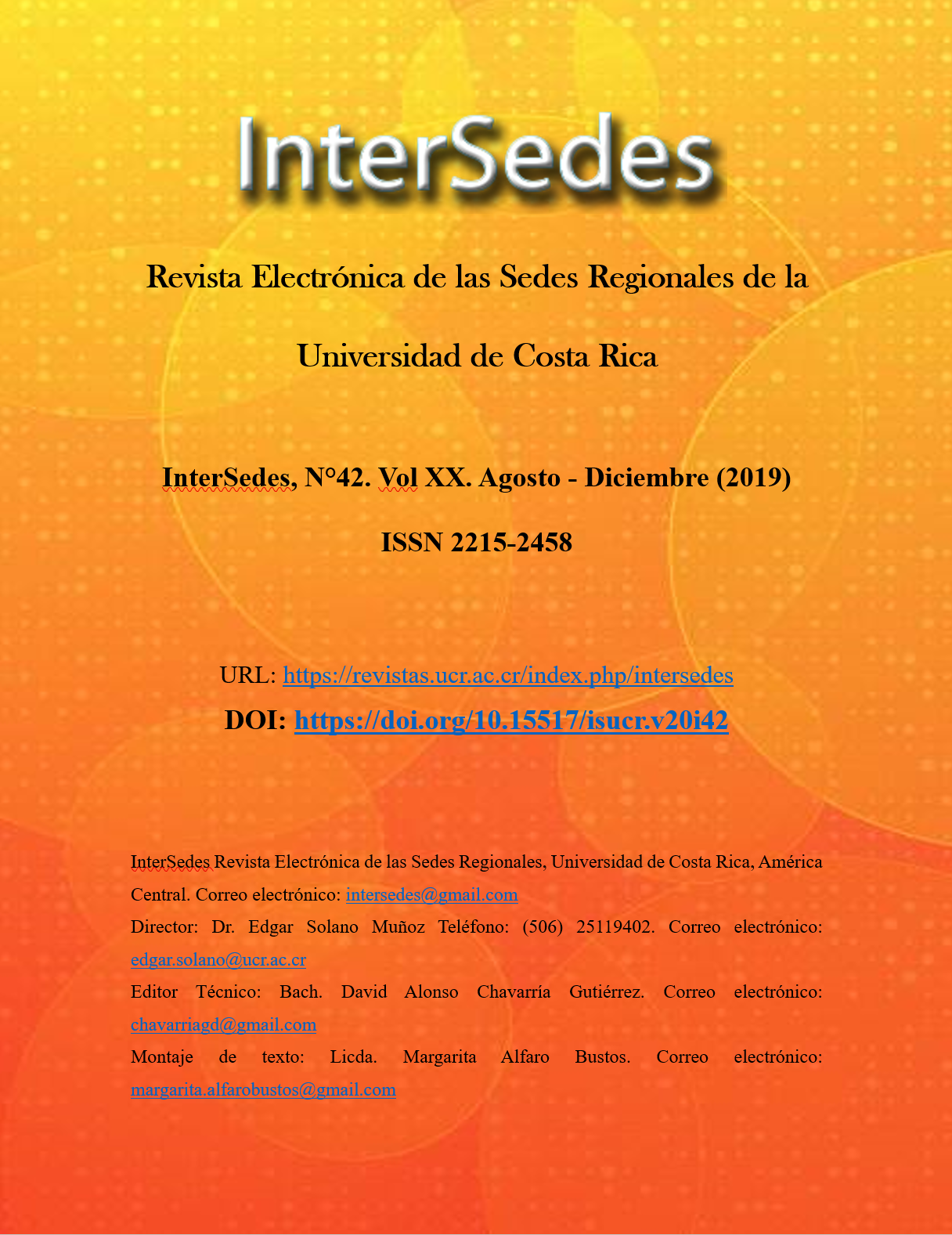Abstract
The main objective of this research is to analyse the use of online social networks among the student body who takes secondary education, through the establishment of risks and preventive steps for a correct communication. The research was conducted under a quantitative approach with a explicative position. The population was formed by 1895 students, distributed in the III cycle of basic education and diversified education, from day high schools of the educative district 02, Sarapiquí canton, this is why it was opted to take a stratified statistic sample of 320 students. As a result, it is determined that the 99% of the interviewees use electronic devices to communicate through internet, with a 96% the cellular phone. It is identified that 75% learnt only to use internet and a 95% uses social networks, a 96% whatsapp, 86% facebook, 67% Instagram, and a 31% snapchat. Moreover, it is evidenced that 83% of the students are alone when using social networks and only 33% of the educative institutions taught them about this topic. Apart from that, 80% of the parents do not establish controls on its use. In conclusion, the student body of secondary uses mainly the cell phone to communicate and access social networks online, such as: Whatsapp, Facebook, and Instagram. In addition, it is established some differences on the relation to know and apply security and privacy policies on the use of those means of communication, it is shown the lack of knowledge by the participants on the educative action: the teacher, student and parents, with regards to the risks and preventive steps when communicating through social networks.
References
Arab, L. E. y Díaz, A. (2015). Impacto de las redes sociales e Internet en la adolescencia: Aspectos positivos y negativos. Revista Médica Clínica Las Condes, 26(1), 7-13. doi: https://doi.org/10.1016/j.rmclc.2014.12.001
Area, M. y Pessoa, T. (2012). De lo sólido a lo líquido, las nuevas alfabetizaciones ante los cambios culturales de la Web 2.0. Revista Comunicar, 38, 13-20. doi: 10.3916/C38-2012-02-01
Arias, F. (2006). Proyecto de Investigación: Introducción a la Metodología Científica. 6ta Edición. Editorial Episteme. Venezuela
Astorga, C. Schmidt, I. (2019). Peligros de las redes sociales: Cómo educar a nuestros hijos e hijas en ciberseguridad. Revista Electrónica Educare, 23(3), 1-24. doi: http://dx.doi.org/10.15359/ree.23-3.17
Barrantes, R. (2005). Investigación: Un camino al Conocimiento. San José: EUNED.
Dorantes Carrión, J. (2016). Redes sociales y el ciberbullying en la Universidad Veracruzana. Revista Ensayos Pedagógicos, 169-188. Recuperado a partir de https://www.revistas.una.ac.cr/index.php/ensayospedagogicos/article/view/9346
Hernández, R, Fernández, C. y Baptista, P. (2006). Metodología de la Investigación. Cuarta Edición. México: Mc Graw Hill.
López González, R., & Alarcón Montiel, E. (2016). Jóvenes estudiantes de la Universidad Veracruzana interactuando en red: ¿Diferencias por género?. Revista Ensayos Pedagógicos, 75-91. Recuperado de https://www.revistas.una.ac.cr/index.php/ensayospedagogicos/article/view/9341
Ministerio de Planificación Nacional y Política Económica (MIDEPLAN). Índice de Desarrollo Social. Recuperado de https://www.mideplan.go.cr/indice-desarrollo-social
Morales, T., Serrano C., Miranda D. A., y Santos, A. (2014). Ciberbullying, acoso cibernético y delitos invisibles. Experiencias psicopedagógicas. México: Universidad Autónoma del Estado de México. Recuperado de http://ri.uaemex.mx/bitstream/handle/20.500.11799/21576/L_515_0.pdf?sequence=4&isAllowed=y
Municipalidad de Sarapiquí (2019). Datos Generales. Recuperado de https://sarapiqui.go.cr/nuestra-municipalidad/datos-generales/136-informacion-poblacional
Programa Estado de la Nación. (2017). Sexto informe estado de la educación. San José, CR:. Disponible en https://www.estadonacion.or.cr/educacion2017/assets/parte-1-capitulo-4.pdf
PROSIC. (2016). Capitulo2: Adolescencia, Socialización y Tic. Disponible en http://www.prosic.ucr.ac.cr/informe-2016
Ros Martín, M. (2009). Evolución de los servicios de redes sociales en Internet. Evolution of Social Network Services, 18(5), 552–557. doi:10.3145/epi.2009.sep.10



